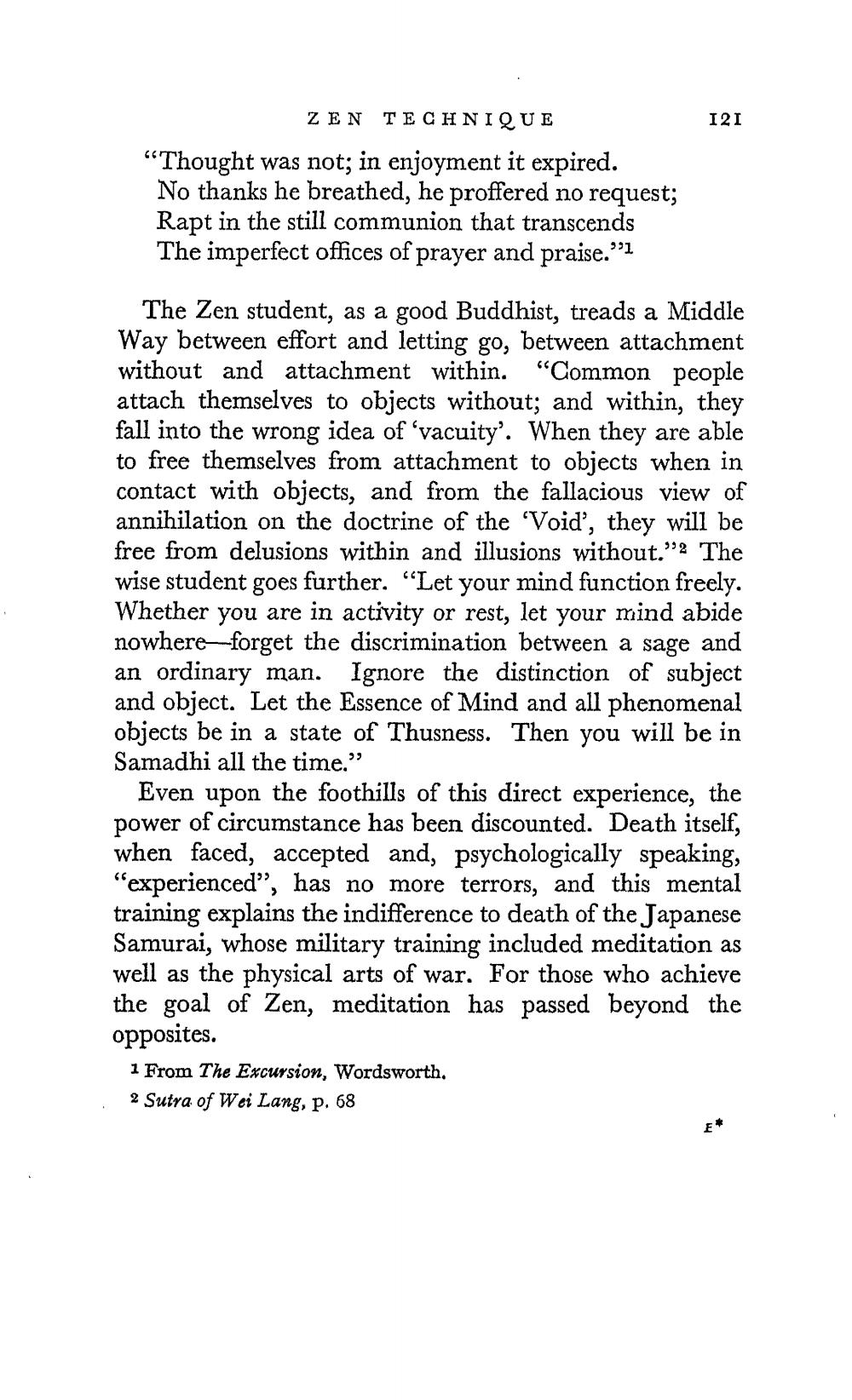________________
Z EN TECHNIQUE
I 21
"Thought was not; in enjoyment it expired.
No thanks he breathed, he proffered no request; Rapt in the still communion that transcends The imperfect offices of prayer and praise."l
The Zen student, as a good Buddhist, treads a Middle Way between effort and letting go, between attachment without and attachment within. “Common people attach themselves to objects without; and within, they fall into the wrong idea of 'vacuity'. When they are able to free themselves from attachment to objects when in contact with objects, and from the fallacious view of annihilation on the doctrine of the 'Void', they will be free from delusions within and illusions without.". The wise student goes further. “Let your mind function freely. Whether you are in activity or rest, let your mind abide nowhere—forget the discrimination between a sage and an ordinary man. Ignore the distinction of subject and object. Let the Essence of Mind and all phenomenal objects be in a state of Thusness. Then you will be in Samadhi all the time.”
Even upon the foothills of this direct experience, the power of circumstance has been discounted. Death itself, when faced, accepted and, psychologically speaking, "experienced”, has no more terrors, and this mental training explains the indifference to death of the Japanese Samurai, whose military training included meditation as well as the physical arts of war. For those who achieve the goal of Zen, meditation has passed beyond the opposites.
1 From The Excursion, Wordsworth, 2 Sutra of Wei Lang, p. 68




